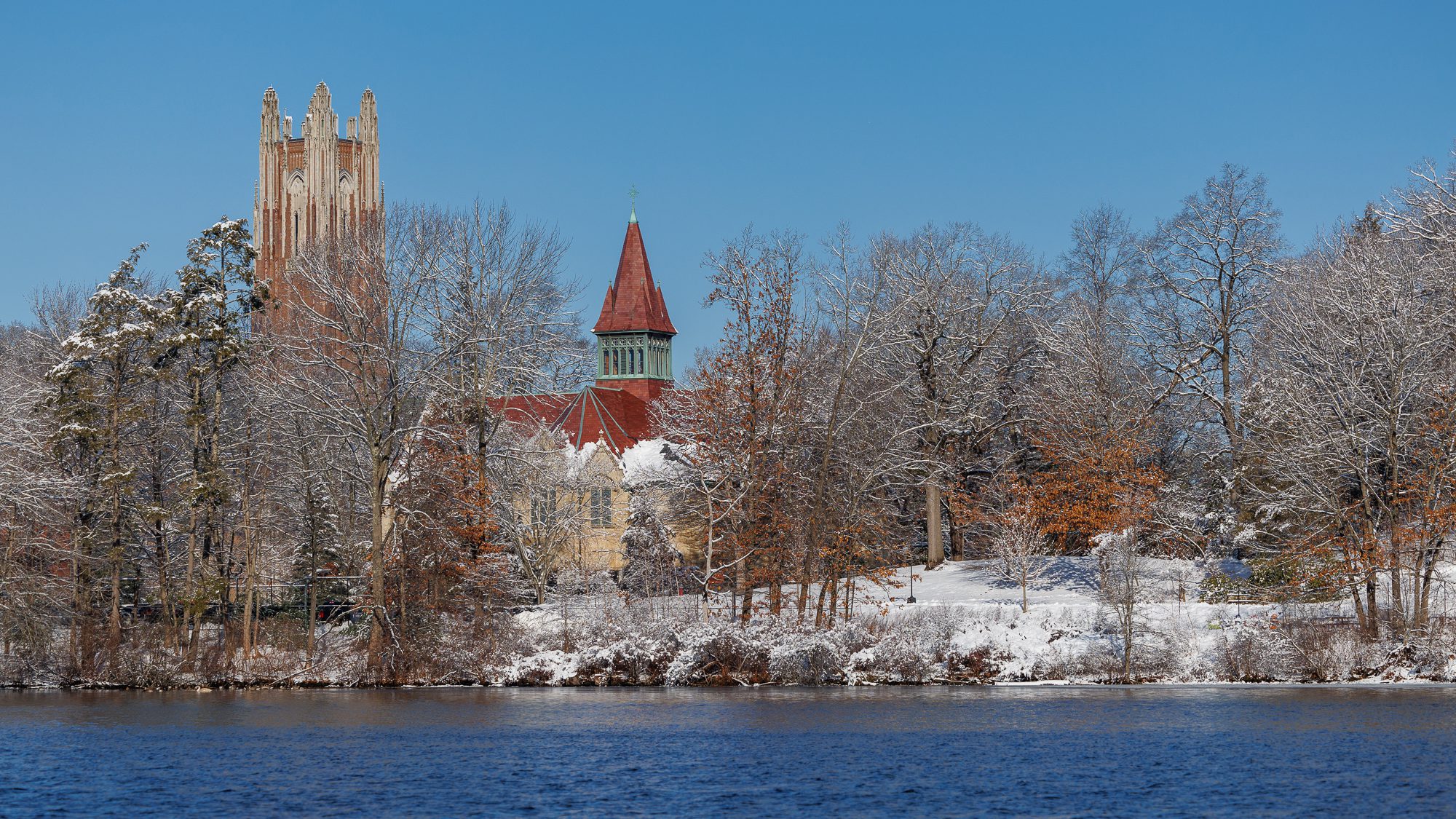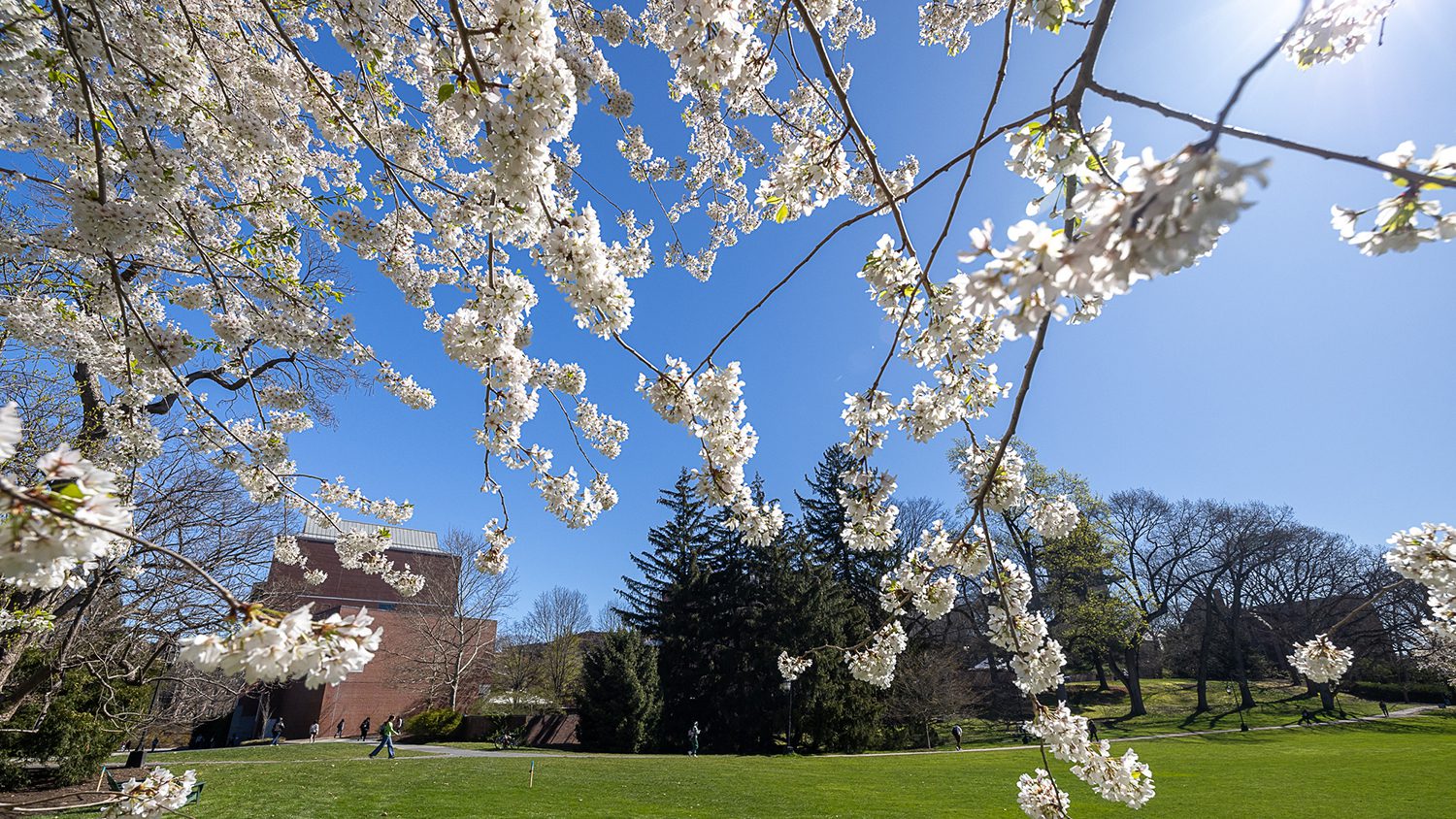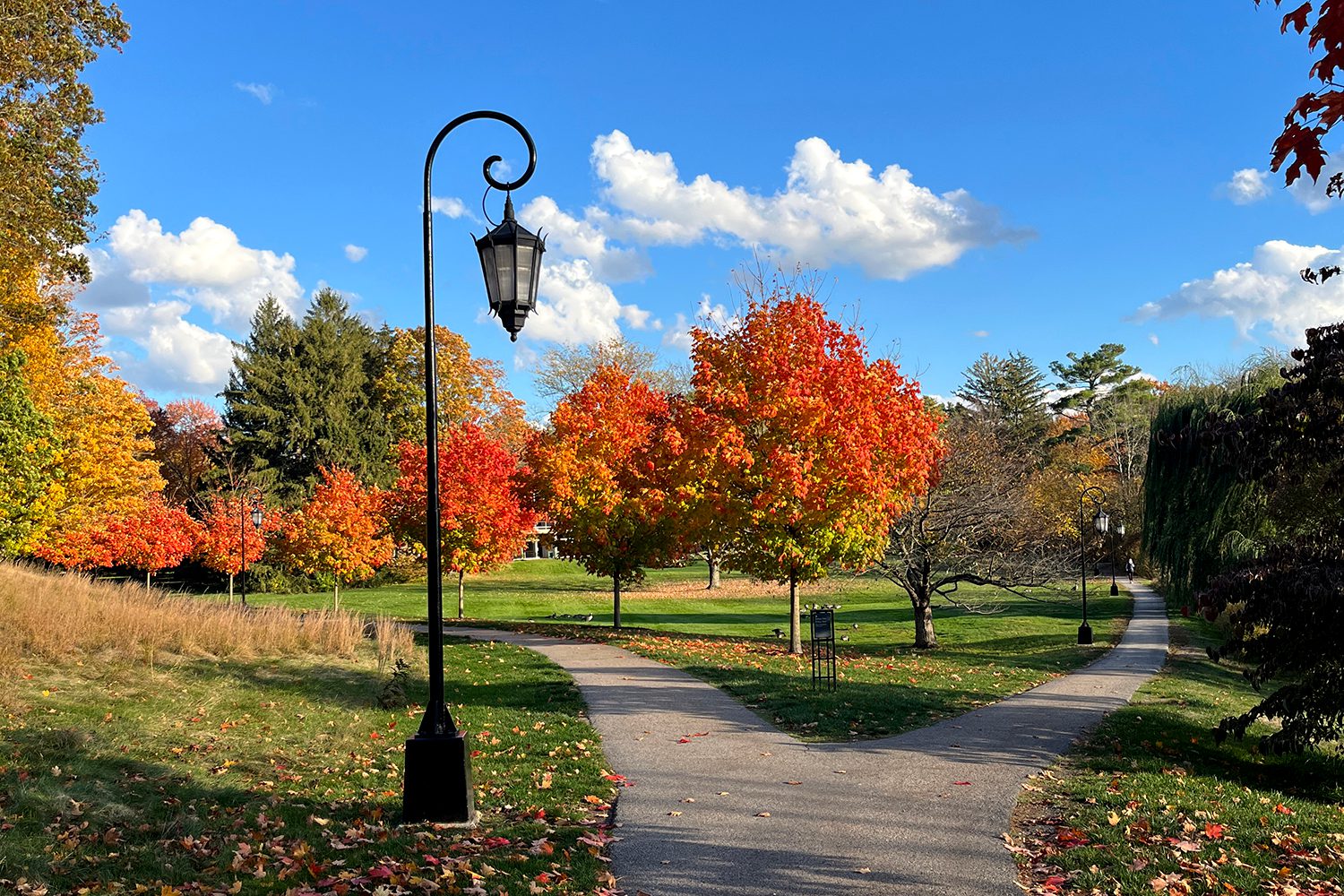“Landscapes are living records,” said Isabella Frontado ’15, an urban designer for the city of Boston and one of a dozen alums and faculty members who reflected on Wellesley’s landscape on October 4 at “To Make a Difference in the World: The Wellesley Landscape at 150.” The one-day symposium, sponsored by a grant from the Wellesley College 150th Community Fund, was presented by the art department, the architecture program, and the Grace Slack McNeil Program in American Art.
“Last fall, when the College solicited ideas for how to celebrate Wellesley’s opening in 1875, it seemed obvious that the landscape should have a special celebration of its own,” said Kathryn O’Rourke ’02, Grace Slack McNeil Professor in American Art and professor of art, in her opening remarks at the symposium. “Not only because it is beautiful and historic, but because it is here that so many threads of what this College is, and aspires to be, entwine.”
Because Wellesley’s landscape has made an impression on every department across campus for 150 years, the symposium featured faculty representing visual art, art history, book studies, writing, anthropology, biological studies, and the Wendy J. Paulson ’69 Ecology of Place Initiative.
When Pauline and Henry Durant founded Wellesley College, most colleges and universities were opting to flatten the landscapes of their campuses. In contrast, the Durants intentionally situated the College’s buildings atop hills, to take advantage of the breezes and beautiful views. The Durants also believed in complete wellness—physical, mental, and spiritual—and felt that having Wellesley students live and learn in a natural environment encouraged that. (Though it has been rumored that the hills were man-made to encourage Wellesley students to exercise.)
“I think that the landscape here gives [Wellesley students] freedom—it’s not about hierarchical power in the same way that formal campuses are,” said landscape architect Gina Ford ’97, a symposium speaker and co-founder of Agency Landscape + Planning, speaking with Amelia McKenna ’28 the day of the symposium. “The landscape here says: ‘This is your space, you use it.’ It gives you that permission.”

The Durants emphasized botanical education—Henry Durant ordered larger-than-life French papier-mâché botanical teaching models for Wellesley students. They also encouraged students to connect with the outdoors. Landscape architect Frederick Law Olmsted, Jr., who also believed in the importance of this connection, wrote to President Caroline Hazard in 1902 that the buildings at Wellesley should accentuate the glacial topography by being placed up on the escarpment, while preserving the meadows and valleys. Olmsted described Wellesley as “not merely beautiful, but with a marked individual character not represented so far as I know on the ground of any other college in the country.”
“This is a landscape that is intended to reveal itself slowly over time to you, not something that you apprehend immediately,” said Rebecca Bedell ’80, Margaret Clapp ’30 Distinguished Alumna Professor of Art, as she led a historical landscape tour during the symposium lunch break. Bedell said the Wellesley campus is designed in the “picturesque” style, which is made up of three components: natural topography that is not radically changed or transformed; shaggy, unclipped, and unmowed vegetation; and paths that wind and bend so that a new picture is visible around every corner.
“The picturesque style was thought to heighten mental acuity. It was going to pique curiosity and encourage exploration and discovery,” explained Bedell. The style was also in line with the Durants’ vision for a Wellesley education, one that rejected rote memorization in favor of an exploratory, discovery-based approach. That led to Wellesley becoming the second college in the country, after MIT, to teach science by the laboratory method, where students made their own discoveries. The landscape “encourages that whole idea of finding things and exploring things for yourself,” continued Bedell. “I’ve been on this campus almost 50 years and I’m still finding spots that I haven’t been to before.”
Even 150 years later, a Wellesley education is deeply entwined with the College’s landscape. The Paulson Ecology of Place Initiative, launched in 2017, invites students to use the campus as a living laboratory. It has created and facilitated projects that include building benches from fallen trees, creating zines about bird species on campus, and the “Music on the Landscape” program. The Camilla Chandler Frost ’47 Center for the Environment is a hub for environmental action, and the Global Flora conservatory and the Botanic Gardens, celebrating their 100th anniversary this year, educate the community and the public through the Edible Ecosystems Teaching Garden, the H. H. Hunnewell Arboretum, and the Alexandra Botanic Garden.

Many faculty also use the landscape in their own work. At the symposium, Vanja Klepac-Ceraj, Theresa Mall Mullarkey Associate Professor of Biological Sciences, spoke of her research on the biochemistry and geological features of Lake Waban. Katherine Ruffin, director of the Book Studies Program and associate teaching professor in art, shared how she makes paper using plant matter that grows on campus. In 2026, Ruffin will collaborate with the Paulson Initiative to make paper from phragmites.
Though it is used for educational purposes, to so many people, Wellesley’s landscape is simply home. For centuries, the area was the ancestral home of the Massachusett, Wampanoag, and Nipmuc nations. Since 1875, thousands of Wellesley students and alums have connected deeply with the campus, often recalling being overwhelmed by its beauty upon first visiting.
Mayrah Udvardi ’14, a symposium speaker and a director at MASS Design Group, lived in many places growing up—Australia, Germany, and Oregon, counting 22 different homes over the course of her life—but she said it wasn’t until she arrived at Wellesley in fall 2010 that she felt truly at home. As an architect, she said, she designs and builds spaces where others can feel as comfortable and secure as she did at Wellesley.
“The campus acts as a kind of invisible glue, holding together that unique network through collective memory and [the] knowledge that we members of it have beheld the same vistas and walked the same paths,” said O’Rourke. “Those paths, as we know, are long. They wind. They go up hills, some quite steep … I can think of no more potent metaphor for our lives, or for the principles of a liberal arts education, than the one this campus embodies.”
—
On Saturday, October 25, as part of the Wellesley at 150 celebration, join Suzanne Langridge, director of the Paulson Ecology of Place Initiative, on a tour of the Wellesley College historical landscape, from the central meadows to Alumnae Valley. Meet at 9 a.m. at the Mozart III sculpture on the path between Founders parking lot and the Science Center.
To learn more about Wellesley’s landscape, read “A Sense of Place” by Catherine O’Neill Grace, watch the accompanying video by Amber Celletti, or check out the book The Landscape & Architecture of Wellesley College by Peter Fergusson, James F. O’Gorman, and John Rhodes, published in honor of Wellesley’s 125th anniversary.
